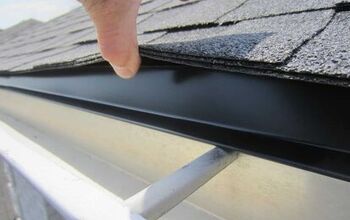What Time Of Year Do I Stop Mowing My Lawn

The end of fall is a sad time for a lot of people. It means shorter days, bitterly cold weather, and a lot of time spent indoors. One upside to the coldest months of the year is that you can finally stop mowing your lawn every week or two. The only problem is, it can be difficult to figure out exactly what time of year you should stop mowing your lawn.
You should stop mowing your lawn once the grass stops growing. This usually happens once the temperatures dip below 40 degrees for a week or longer. If you have frequent frosts or if your grass is no longer green, it is unlikely to continue growing for the rest of the year. Your climate, the type of grass, and when leaves fall all impact when you should stop mowing your lawn.
There are a lot of variables involved when it comes to figuring out when you should stop mowing your lawn. The good news is that while there are many variables, there are also several signs and general rules of thumb that can help you determine when you can put your lawn mower away until the spring.
When Should I Stop Mowing My Lawn?
While many variables affect when you should stop mowing your lawn for the year, there are some rules of thumb you can follow. Generally, you should stop mowing your lawn once the weather consistently dips below 45 degrees. A week of temperatures below 40 degrees almost guarantees you are done mowing for the year.
This usually coincides with the first frost. In many cases, you should aim to stop mowing a week or less before the first frost. This often means you can stop mowing your lawn in late October or early November, once the temperatures are low and all the leaves have fallen. In warmer climates, however, you may need to mow your lawn until December.
In subtropical zones, you may have to mow your lawn throughout the year, only mowing it less frequently in the coolest and slowest growing months.
Four Signs It Is Safe To Put Your Lawn Mower Away For The Year
1. There Is Snow Or Frost On The Ground
One of the biggest tell-tale signs that it is time to polish up your expensive lawn mower and put it away for the year is when you see frost or snow on the ground. Snow and frost indicate evening temperatures dipping below freezing. This is a visual sign that the weather has gotten too cold for the grass to grow.
Keep in mind, however, that an early frost or light dusting followed by warm weather might be a false alarm. Remember, the weather must stay consistently chilly for your grass to go dormant.
2. Your Lawn Is No Longer Green
After a deep frost or frequent cold temperatures, your lawn may start to look less green and more yellow. While this is not how you want your lawn to look, it is perfectly natural for your grass to change colors a bit once it freezes.
This discoloration also means your grass is likely growing much slower, or not at all. This is especially true if you don’t see any new green growth underneath.
3. The Grass Has Not Grown Since You Last Mowed
Another sign it is time to put your lawnmower away for the year is if you get ready to mow your lawn, but notice it hasn’t grown at all. While this process often happens slowly, if you notice that there has been no new growth, then there is a good chance your grass is done growing for the year.
If this lack of growth coincides with the first frosts and cold temperatures, it’s safe to say you can start preparing your lawn mower for the winter.
4. The Temperatures Are Consistently Less Than 40 Degrees
It’s important to remember that not all signs that your lawn has stopped growing are visual. One of the most foolproof and scientific ways to know it is time to stop mowing your lawn is if the outdooor temperatures consistently dip below 40 degrees.
You may live in an area that gets cold but rarely freezes, or somewhere that is cold but it never snows. To know whether or not your lawn has likely gone dormant, check the weather, both past and present.
Four Factors That Impact When To Stop Mowing Your Lawn
1. Where You Live
Where you live, the weather and length of days in the area where you reside have a profound impact on how late in the year your grass grows. If you live in a climate with a short growing season and long winters, then you may be able to stop mowing in October.
If, however, you live in a sub-tropical climate, then you may need to continue to water your lawn and mow through the beginning of December. This may also mean you only get a two-month break from mowing.
2. The Type Of Grass
The type of grass you grow can also impact how long into the fall (or winter) you need to mow it. Some grasses are considered warm-weather grasses. These are common in places like Florida. You can usually stop mowing these types of grass once temperatures dip below 50 to 55 degrees.
If, however, you have cool-weather grass, then it will continue to grow and thrive when the weather is in the 50s. This grass will generally stop growing between 40 and 45 degrees.
3. Late-Falling Leaves
Grass is not the only thing you need to think about when it comes to mowing your lawn in the fall. Falling leaves can also indicate when you should stop mowing. Leaves are generally removed using a leaf blower or rake.
Still, it is also good to run your mower once the leaves fall to ensure any straggling leaves are chopped up and turned into nutritious mulch for your grass. This reduces the risk of fungus and bacteria forming in your lawn.
4. Keep Mowing If It’s Growing
While there are general rules of thumb, nature is going to do what it wants to do. When it comes down to it, as long as your grass continues to grow, then you should continue to mow it. This includes if there has been frost and if the temperatures have been below 40 degrees. Sometimes, moist soil and bright sunshine can impact when your lawn stops growing. Until you notice your grass has stopped reaching the sky, then you should keep reaching for your mower.
What Length Should You Leave Your Grass For The Winter?
In addition to knowing when it’s time to stop cutting your grass, you must know how long you should cut your grass the final time you use a mower for the year. This is crucial because the length can make your grass healthy the next year, or it could potentially kill it.
Generally, when cutting your grass for the final time in a given year you should cut it about .5 inches shorter than you normally would. This is slightly shorter than normal, but not so short that your grass will struggle. This length will promote healthy growth come the next spring, and minimize risks that can occur if you cut it too short or leave it too long.
- Keeping your grass too long can cause several problems. Long grass will get matted and compact after a snowfall. This compact matted grass significantly increases the likelihood of fungus and other grass-killing problems. It can also be messy, and make it very difficult to cut your grass in the spring.
- Cutting your grass too short can put it into shock, make it work harder, and even kill it. Make sure you don’t go overboard and cut your grass too short, especially right before a frost.
Summing Up When To Stop Mowing Your Lawn For The Year
If you aren’t a big fan of mowing your lawn every week, then you are probably counting down the days until you can put your lawn mower away. To determine when you can stop mowing your lawn for the year, look at the weather. Once temperatures stay at or below 40 degrees for a week or longer, your grass will likely stop growing. Remember that factors like your location and climate, and even the type of grass in your lawn can impact when you should stop mowing your lawn.
Related Guides:

Tom Gaffey is an expert writer who currently resides in Washington D.C. Tom has a passion for real estate and home improvement writing, as well as travel and lifestyle writing. He lived the last twelve years in Hawaii where he worked closely with luxury resorts and event planners, mastering his knowledge of aesthetics and luxury products. This is where he found his passion for home improvement and a keen interest in DIY projects. Currently, Tom resides in Washington D.C, and also working on his debut fiction novel.
More by Tom Gaffey











![10 Best Scroll Saws for 2022 [Ultimate Reviews & Buyer's Guide]](https://cdn-fastly.upgradedhome.com/media/2023/07/31/9070684/10-best-scroll-saws-for-2022-ultimate-reviews-buyer-s-guide.jpg?size=350x220)















![12 Washing Machine Brands to Avoid [with Recall Data]](https://cdn-fastly.upgradedhome.com/media/2023/07/31/9075781/12-washing-machine-brands-to-avoid-with-recall-data.jpg?size=350x220)